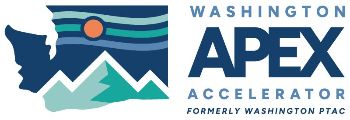Five words for Kitsap's economy in 2023

7 Feb 2023
Economy, Executive Director Monthly Column
 Joe Morrison, KEDA Executive Director
Joe Morrison, KEDA Executive Director
for the Kitsap Sun
My annual “five words about this year’s economy” column is ready... and it’s February. Sorry. At the Kitsap Economic Development Alliance we’ve been having long-term strategic plan discussions on the local economy recently. It’s taken me a bit of time to write this because I’ve been thinking about the column in light of those discussions.
Let's get to it. I believe these five words will define our economic lives in Kitsap in 2023. The positive take away: They’re all pretty much tied to economic prosperity, although there are obstacles to overcome in the form of “good problems.”
Uptempo
It’s clear that at the national level there’s going to be continued economic tightening, with the federal reserve working to bring inflation under control by continuing rate increases. Despite this, my call is that our economic lives in Kitsap will generally continue “as is” with local economic conditions remaining generally positive. Some reasons for this: First, any US economic slowdown might not be much of a slowdown at all–we were technically in a recession in the first half of 2022, let me know if you noticed. Second, given Kitsap’s strong public sector employment footprint (about one in three Kitsap workers have a government job), private sector corrections are less likely to impact our economy locally.
Three, let’s take that government discussion further. The Navy continues to invest in Kitsap, which is positive and vital for our economy. KEDA estimates Naval Base Kitsap employment is above 37,000 currently. From 2020 to 2021, base employment grew by 5,500 in one year. Plans for 2023 and beyond call for the Navy to continue investment here, ranging from eventual billions in improvements at Puget Sound Naval Shipyard — we need a new Ford-class aircraft carrier capable drydock there — to ongoing investment in the Manchester Fuel Depot, maintenance support facilities, transit improvements and more.
Growth
It’s here, it’s regional, and it's likely to continue even if it might slow. Pre-pandemic, Kitsap usually struggled to meet its population growth targets. Today we are very much on track. In 2022 by the state’s estimation, Kitsap’s population grew 1.2% to 280,900 — seventh in terms of overall growth among Washington’s 39 counties. Now, Kitsap is in no way unique as a community in seeing growth: Both our state and the Greater Seattle area are growing overall. So while we’re not by any means “first in growth” in Washington, Kitsap is a small community, and so you both clearly feel and see growth here, whether that’s the creation of new large-scale retail like WinCo coming into Silverdale or Home Depot considering Port Orchard, or perhaps most importantly, the significant new housing underway.
Housing
And here is the first challenging word of the year — we don’t have enough housing, even though thousands of new units are planned across Kitsap over the next five years. In Kingston and Poulsbo, we’ve recently seen some of the largest projects ever in those communities, with Arborwood and the Oslo Bay Apartments, respectively. On Bainbridge, there are two affordable housing projects under construction and at least four more being discussed, varying from faith-based solutions to potential public reuse and redevelopment.
Housing costs remain high in Kitsap, 35% above the national average in 2022. That's in line with costs of housing in both Whatcom and Skagit counties, and above Thurston. Kitsap's housing costs have permanently shifted, and that's something we need to reckon with: According to the Kitsap County Association of Realtors, median home prices across Kitsap have risen around 20% over the last two years to generally sit at $500,000 (excluding Bainbridge). New apartments in Port Orchard and Bremerton often cost between $2,000 to $3,000 monthly, mimicking Seattle prices. We badly need more housing supply in Kitsap, period.
Workforce
Here’s our second challenging word. There are hundreds of open jobs each at Naval Base Kitsap, St. Michael Medical Center and our casinos. Beyond that, some of the major private firms headquartered in Kitsap that employ over 100 people say they could grow their employment base by another 15%. If they could only find the workers, they could add even more jobs to their rosters, increasing opportunities and adding prosperity to our community. But workers remain stubbornly difficult to find. “Bodies, bring me bodies,” one CEO said to me recently, talking about this challenge.
Kitsap has a workforce gap, and it’s going to take time, potentially years, to work itself out. After all, you can’t just suddenly go and become a nurse, a welder, or a specialist in the construction trades — some form of training is required in each case. The two points of good news are this: Some local CEOs are starting to see workforce stabilize, often because they are taking matters into their own hands by handling their own training or increasing incentives, for instance. Further, having open jobs in our community–even if there are over a thousand of them–is an indicator of economic success. Open jobs are a much better problem to have than high unemployment.
Infrastructure
So, given all the above, the question is: Do we have enough infrastructure to make our community successful, capitalize on this uptempo economy, and continue our strong quality of life? That looks like hard infrastructure, such as water and sewer capacity in both our residential and industrial zones, roads, and electricity. It also looks like soft infrastructure, in the form of strong schools with enough capacity to serve students, adequate professional services and medical care, and enough at-home and professional childcare providers. Too often the answer is no. As a community we’ll need to research these deficiencies, target a select few and invest in them to drive our best possible economic outcome.
I recognize the words above might cause some consternation. Not everyone reaps the benefits of the current economy, and growth can be uncomfortable for many of us. After all, that’s why we live west of the water. But these are good problems to have, and the kinds of economic challenges we want as a community: An uptempo economy, fueled by growth, with increasing home values and plenty of jobs to go around. To be sure, these economic high points come with their own forms of pain. Costs are high in Kitsap, and there’s a burden placed on all kinds of our hard and soft infrastructure as we face ongoing, consistent growth.
The good news is, Kitsap does a good job of investing in itself. That’s critical, because successful communities with thriving economies are those that put dollars toward their future with a long-term vision. Making ambitious investments as community, planning for a positive future economy, is critical; making sure we have enough housing capacity to go around so people can afford to live here, and that there’s enough hard and soft infrastructure not just for our lives but also to support employer and business interests — those are investments we can make now, yielding returns for all of our community generations to come.
Let’s continue to invest in ourselves and set the table for continued economic success. Because the truth is that the brightest opportunities for Kitsap’s economy are both right now at this very moment, and in the years that lie before us.
Joe Morrison (morrison@kitsapeda.org) is Executive Director at the Kitsap Economic Development Alliance. Sign up for KEDA e-mails here, and save the date for our Annual Meeting and Economic Forecast, held March 30 at Clearwater Casino and Resort from 11 a.m. to 1 p.m
More Topics

Federal program helps low-income households pay for internet services & connected devices
Feb 7 2023















.png)

.png)




.png)



